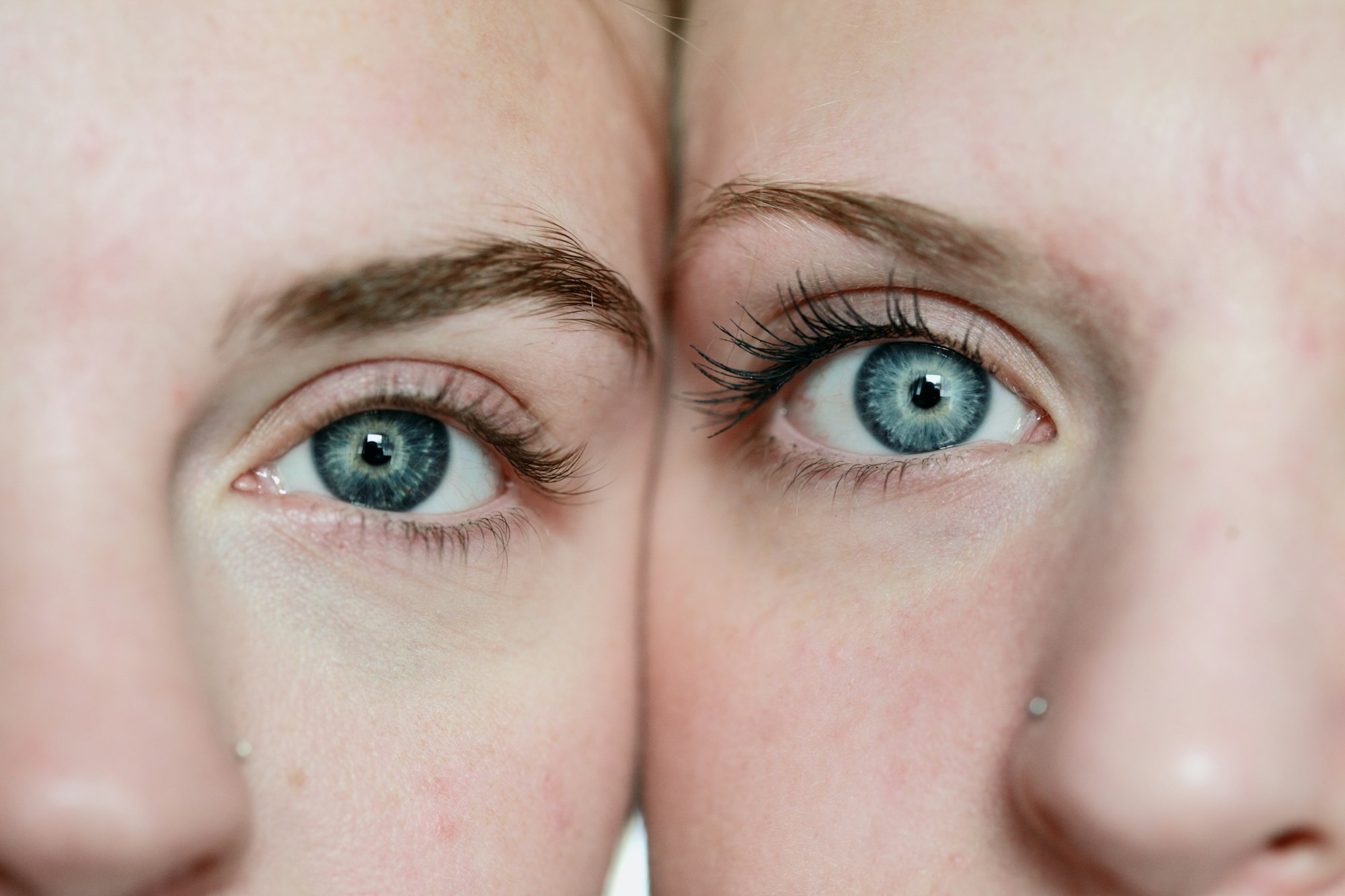Content Summary
Anhedonia, a term derived from the Greek words "an" (without) and "hedone" (pleasure), is a complex and often debilitating symptom characterized by a diminished ability to experience pleasure or interest in once-enjoyable activities.
Anhedonia is a term used in psychology and psychiatry to describe a symptom characterized by a reduced ability to experience pleasure or interest in previously enjoyable or rewarding activities. It's often associated with mood disorders such as depression, but it can also be present in other mental health conditions.
People experiencing anhedonia may find that activities they used to find pleasurable, exciting, or satisfying no longer evoke the same positive feelings. They might feel a general sense of emotional flatness or numbness.
Anhedonia can impact various aspects of a person's life, including their ability to engage in social interactions, hobbies, work, and even basic daily activities.
Anhedonia is considered one of the core symptoms of major depressive disorder, which is a common type of depression. It's important to note that anhedonia can also be a symptom of other mental health conditions, such as bipolar disorder, schizophrenia, and certain substance use disorders.


There are two primary types of anhedonia:
Physical Anhedonia: This type refers to a decreased ability to experience pleasure from sensory experiences such as taste, touch, or sexual activity. Individuals with physical anhedonia might have difficulty deriving enjoyment from things like eating their favorite foods or engaging in physical affection.
Social Anhedonia: Social anhedonia involves a reduced interest in and enjoyment of social interactions and relationships. People with social anhedonia may have difficulty connecting with others, even if they used to enjoy socializing.
Anhedonia can be challenging to manage, but it's important to recognize it as a symptom that can be addressed with appropriate treatment and support.
Causes of Anhedonia: A Multifaceted Puzzle
Anhedonia doesn't have a single cause; rather, it's the result of a combination of psychological, neurobiological, and environmental factors. Some potential causes include:
Neurochemical Imbalance: Disruptions in neurotransmitters like dopamine, which is often referred to as the "pleasure neurotransmitter," can contribute to anhedonia. Reduced dopamine activity may affect the brain's reward system.
Brain Structure and Function: Abnormalities in brain regions involved in reward processing, such as the ventral striatum, prefrontal cortex, and amygdala, have been linked to anhedonia.
Genetics: Genetic factors can play a role in an individual's vulnerability to anhedonia. Certain genetic variations may influence how the brain responds to rewarding stimuli.
Stress and Trauma: Chronic stress, trauma, and adverse life events can impact brain function and disrupt the brain's reward circuitry, potentially leading to anhedonia.
Mood Disorders: Anhedonia is a prominent symptom of major depressive disorder. It can also appear in bipolar disorder, schizophrenia, and other mood-related conditions.
When Anhedonia Appears in Life: Recognizing the Signs
Anhedonia can manifest in various ways and contexts:
Major Depressive Episodes: One of the key diagnostic criteria for major depressive disorder is the presence of anhedonia. Individuals may lose interest in activities they once loved and find it difficult to experience pleasure.
Social Anhedonia: Some individuals experience anhedonia specifically in social situations, leading to a lack of enjoyment in interactions and relationships.
Physical Anhedonia: This form of anhedonia is characterized by reduced pleasure from sensory experiences like eating, touching, or engaging in physical affection.
Apathy: Anhedonia can contribute to a general sense of indifference or apathy toward life and activities.
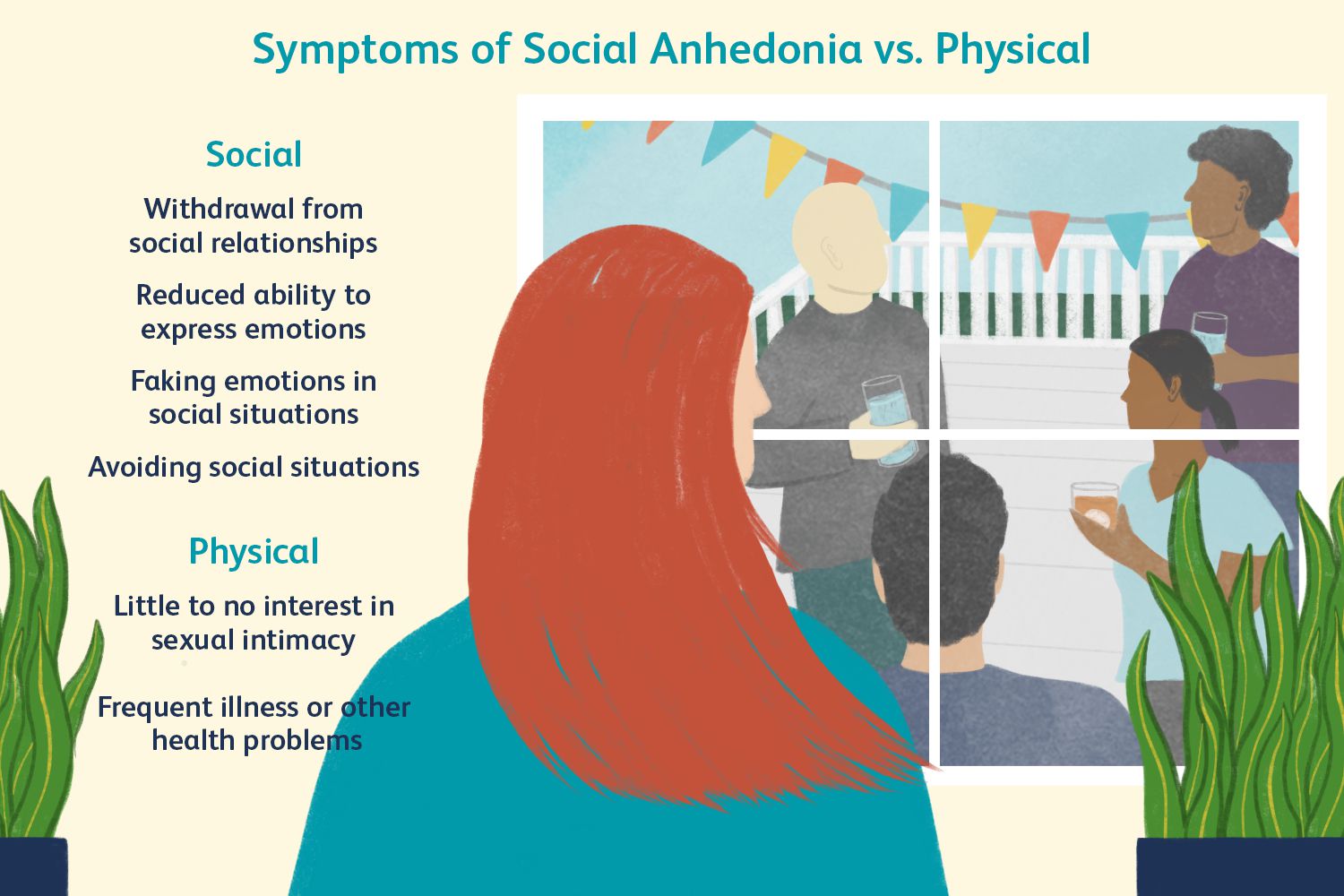
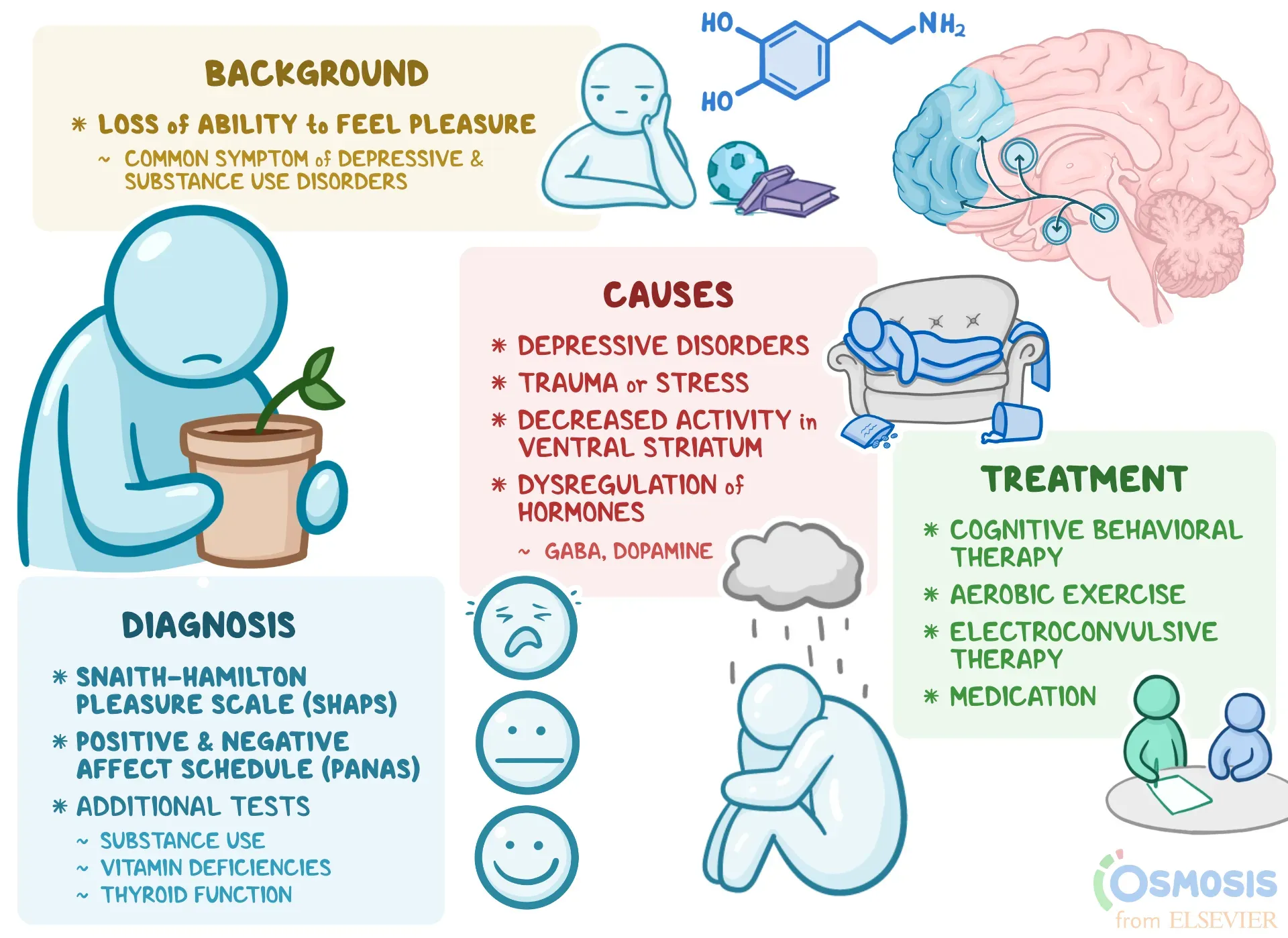
Dealing with Anhedonia: Strategies for Coping
While anhedonia can be challenging, there are strategies that individuals can use to cope:
Professional Help: If anhedonia persists and interferes with daily life, seeking support from a mental health professional is crucial. They can provide a proper diagnosis and tailored treatment plan.
Engage in Routine: Establishing a daily routine, even if it feels challenging, can provide structure and a sense of accomplishment.
Set Small Goals: Start with achievable tasks and activities. Gradually increasing the complexity can help build a sense of achievement.
Stay Connected: Maintain social connections even if it's difficult. Engaging with others, even briefly, can provide emotional support.
Practice Self-Care: Engage in activities that promote physical and emotional well-being, such as exercise, mindfulness, and hobbies.
Prevalence and Vulnerability: Who is More Exposed to Anhedonia?
Anhedonia can affect individuals of all ages, genders, and backgrounds. However, certain factors may increase vulnerability:
Mood Disorders: People diagnosed with depression, bipolar disorder, and schizophrenia are more likely to experience anhedonia.
Neurological Conditions: Certain neurological conditions, such as Parkinson's disease, can also lead to anhedonia.
Chronic Stress: Prolonged stress and trauma can increase the risk of anhedonia.
Treating Anhedonia: Pathways to Recovery
Treatment for anhedonia depends on its underlying cause and the individual's specific situation:
Psychotherapy: Cognitive-behavioral therapy (CBT) and other therapeutic approaches can help individuals identify negative thought patterns and develop coping strategies.
Medication: Antidepressant medications, particularly selective serotonin reuptake inhibitors (SSRIs) and other types, may address neurochemical imbalances contributing to anhedonia.
Behavioral Activation: This therapeutic approach focuses on gradually reintroducing pleasurable activities into one's life to counteract anhedonia.
Lifestyle Changes: Engaging in regular exercise, maintaining a healthy diet, ensuring sufficient sleep, and reducing stress can positively impact mood and potentially alleviate anhedonia.
Combination Therapy: Often, a combination of psychotherapy and medication yields the best results in treating anhedonia.
Anhedonia and ADHD the Gap of Motivations >>>
Most FAQs about Anhedonia:
Is Anhedonia the Same as ADHD?
No, anhedonia and ADHD (Attention-Deficit/Hyperactivity Disorder) are not the same. They are two distinct psychological concepts with different characteristics and implications. Let's explore the differences between the two:
Anhedonia:
Anhedonia is a symptom associated with mood disorders, particularly depression. It refers to a reduced ability to experience pleasure or interest in activities that were once enjoyable or rewarding.
People with anhedonia may find that they no longer derive pleasure from things they used to love, and they may have a general sense of emotional flatness or numbness. Anhedonia is characterized by a lack of positive emotional response rather than hyperactivity or impulsivity.
ADHD (Attention-Deficit/Hyperactivity Disorder):
ADHD is a neurodevelopmental disorder characterized by persistent patterns of inattention, hyperactivity, and impulsivity that can impact daily functioning and well-being.
Individuals with ADHD may struggle with tasks that require sustained attention, may be easily distracted, have difficulty organizing tasks, and exhibit impulsive behavior.
Hyperactivity can also be a hallmark of ADHD, where individuals may fidget, have difficulty remaining seated, and exhibit excessive restlessness. ADHD primarily affects cognitive and behavioral functioning rather than emotional responsiveness.
While anhedonia and ADHD are separate concepts, it's worth noting that they can coexist in some cases. For example, a person with ADHD may also experience symptoms of depression, including anhedonia. This is why a comprehensive assessment by a qualified mental health professional is important to accurately diagnose and address any underlying conditions.
What is the Root of Anhedonia?
The root of anhedonia, or the underlying factors that contribute to its development, is complex and can vary among individuals. Anhedonia is often associated with mood disorders, particularly depression, but it can also occur in other mental health conditions and situations.
Some of the key factors that may contribute to the development of anhedonia include:
Neurochemical Imbalance: One of the prominent theories is that anhedonia is linked to imbalances in certain neurotransmitters, particularly dopamine.
Dopamine plays a crucial role in the brain's reward and pleasure pathways. Reduced dopamine activity or abnormalities in its receptors can impact the brain's ability to experience pleasure from rewarding stimuli.
Brain Circuitry: Brain regions involved in reward processing, such as the ventral striatum and prefrontal cortex, play a significant role in anhedonia. Disruptions in the connections and functioning of these regions can lead to a decreased ability to experience pleasure.
Genetic Factors: Genetic predisposition may contribute to an individual's vulnerability to anhedonia. Certain genetic variations might influence how the brain responds to rewarding stimuli and regulates emotions.
Stress and Trauma: Chronic stress, trauma, and adverse life events can impact brain function and disrupt the brain's reward circuitry. This disruption can lead to anhedonia as a result of altered neural pathways.
Inflammation: Some research suggests a connection between inflammation and anhedonia. Inflammatory processes in the body and brain may affect neurotransmitter function and contribute to reduced pleasure responses.
Psychological Factors: Negative thought patterns, low self-esteem, and cognitive distortions can influence emotional experiences and contribute to anhedonia.
Other Mental Health Conditions: Anhedonia is a common symptom of various mental health conditions, including depression, bipolar disorder, schizophrenia, and substance use disorders.
Physical Health: Certain medical conditions, such as chronic pain, hormonal imbalances, and neurological disorders, can contribute to anhedonia by affecting the body's physiological functioning.
Social Isolation: Lack of social connections and engaging in meaningful relationships can lead to reduced opportunities for pleasure and contribute to anhedonia.
It's important to recognize that anhedonia is a complex phenomenon influenced by a combination of biological, psychological, and environmental factors. Each individual's experience of anhedonia may have a unique combination of these factors.
A comprehensive assessment by a qualified mental health professional is essential to understand the underlying causes and to develop an effective treatment plan that addresses the specific factors contributing to anhedonia in each case.
Can Anhedonia be Developed by an Abusive Relationship?
Yes, an abusive relationship can potentially contribute to the development of anhedonia. Anhedonia, characterized by a reduced ability to experience pleasure or interest in activities, can arise as a response to chronic stress, trauma, and emotional pain, all of which are commonly associated with abusive relationships.
Here's how an abusive relationship can impact an individual and potentially lead to anhedonia:
Chronic Stress and Trauma: Abusive relationships often involve ongoing stress, fear, and trauma due to emotional, psychological, or physical abuse. Chronic exposure to stress and traumatic events can disrupt the brain's reward circuitry, leading to changes in neurotransmitter activity and contributing to anhedonia.
Emotional Pain and Isolation: Abusive relationships are often characterized by manipulation, control, and emotional manipulation. Constant emotional pain and isolation can negatively impact an individual's emotional well-being, potentially leading to feelings of numbness and reduced capacity to experience pleasure.
Psychological Impact: Emotional abuse, gaslighting, and manipulation can erode a person's self-esteem, self-worth, and sense of agency. These psychological effects can contribute to a sense of hopelessness and a lack of enjoyment in life.
Depression and Anxiety: Abusive relationships can lead to the development of mood disorders such as depression and anxiety. Anhedonia is a common symptom of depression, and individuals in abusive relationships may experience this as part of their overall emotional state.
Avoidance and Apathy: As a survival strategy, individuals in abusive relationships might suppress their emotions, detach from their feelings, or avoid situations that trigger distress. Over time, this avoidance and emotional suppression can contribute to anhedonia.
Isolation from Support: Abusers often isolate their victims from friends, family, and social support networks. This isolation can limit opportunities for positive social interactions and activities that bring pleasure, contributing to anhedonia.
It's important to recognize that while abusive relationships can contribute to anhedonia, they are not the sole cause. Anhedonia can arise from a combination of factors, including biological predispositions, other life stressors, and pre-existing mental health conditions.
If you or someone you know is in an abusive relationship and experiencing symptoms of anhedonia or other mental health concerns, seeking support is crucial.
How to Test for Anhedonia?
Testing for anhedonia involves a comprehensive assessment by a qualified mental health professional. Anhedonia is a complex symptom that can manifest in various ways and can be indicative of underlying mental health conditions. Here are the steps typically involved in testing for anhedonia:
Initial Evaluation: The process usually begins with an initial evaluation by a mental health professional, which could be a psychiatrist, psychologist, therapist, or counselor. This evaluation involves discussing the individual's symptoms, experiences, and medical history.
Clinical Interview: The mental health professional will conduct a thorough clinical interview to gather information about the individual's mood, emotions, daily functioning, relationships, and any history of mental health conditions.
Questionnaires and Self-Report Scales: Mental health professionals often use standardized questionnaires and self-report scales to assess an individual's level of anhedonia and related symptoms. These assessments help quantify the severity of anhedonia and track changes over time.
Diagnostic Criteria: The mental health professional will use established diagnostic criteria from the Diagnostic and Statistical Manual of Mental Disorders (DSM-5) to determine if the individual's symptoms align with a specific mental health condition, such as major depressive disorder.
Assessment of Related Symptoms: Anhedonia is often accompanied by other symptoms of mood disorders, such as changes in sleep patterns, appetite, energy levels, concentration, and overall mood. The mental health professional will assess these related symptoms to gain a comprehensive understanding of the individual's emotional well-being.
Exploration of Underlying Factors: The mental health professional will explore potential underlying factors contributing to anhedonia, such as recent life events, trauma, medical conditions, substance use, and other psychological factors.
Collaborative Treatment Planning: Based on the assessment findings, the mental health professional will collaborate with the individual to develop a personalized treatment plan. This plan may include therapy, medication, lifestyle changes, and coping strategies to address anhedonia and related symptoms.
What are the Consequences if Anhedonia is Left Untreated?
If anhedonia is left untreated, it can have a significant impact on an individual's overall quality of life and well-being. Anhedonia is often a symptom of underlying mental health conditions, such as depression, and it can also be associated with other disorders like schizophrenia or substance use disorders.
Here are some potential consequences of leaving anhedonia untreated:
Impaired Functioning: Anhedonia can lead to a decreased ability to experience pleasure from activities and social interactions. This can result in reduced motivation to engage in daily activities, work, hobbies, and relationships, leading to impaired functioning.
Negative Impact on Relationships: Difficulty experiencing pleasure can strain relationships with family, friends, and romantic partners. Individuals with anhedonia may have difficulty connecting emotionally, leading to misunderstandings and feelings of isolation.
Worsening Mental Health: Anhedonia is often accompanied by other symptoms of mood disorders, such as low mood, fatigue, and changes in sleep and appetite. If left untreated, these symptoms can worsen and contribute to the development of more severe depression or other mental health conditions.
Social Withdrawal: The lack of enjoyment in social activities can lead to social isolation and withdrawal from social interactions. This isolation can exacerbate feelings of loneliness and contribute to a cycle of negative emotions.
Reduced Quality of Life: Anhedonia can significantly impact an individual's overall quality of life. Life may feel dull, unfulfilling, and devoid of meaning, leading to a sense of hopelessness and dissatisfaction.
Increased Risk of Substance Abuse: Some individuals may turn to substances such as drugs or alcohol in an attempt to self-medicate or temporarily alleviate the emotional emptiness associated with anhedonia. This can lead to the development of substance use disorders.
Decreased Treatment Response: Anhedonia can affect an individual's motivation to seek treatment and engage in therapeutic interventions. Without treatment, the individual's condition may not improve, and they may struggle to adopt healthy coping strategies.
Risk of Suicidal Ideation: Severe anhedonia, particularly when accompanied by other depressive symptoms, can increase the risk of suicidal thoughts and behaviors. It's important to take any thoughts of self-harm seriously and seek help immediately.
It's worth noting that anhedonia is treatable, and seeking professional help can make a significant difference in improving one's emotional well-being.
How Long Does it Take to Treat Anhedonia?
The duration of treatment for anhedonia can vary widely depending on several factors, including the underlying cause, the severity of symptoms, the individual's response to treatment, and the type of interventions used.
Anhedonia is often a symptom of underlying mental health conditions, such as depression, and treating it involves addressing the root causes and improving overall emotional well-being.
What Vitamins and Supplements are Used to Improve Anhedonia Symptoms?
While vitamins and supplements can play a role in supporting overall mental health and well-being, it's important to note that they should not be used as a substitute for professional medical treatment.
Anhedonia is often a symptom of underlying mental health conditions, and addressing it requires a comprehensive approach that may include therapy, medication, lifestyle changes, and support from qualified mental health professionals.
That said, here are some vitamins and supplements that have been studied for their potential benefits on mood and mental health:
Omega-3 Fatty Acids: Omega-3 fatty acids, found in fish oil supplements, have been associated with potential benefits for mood and mental health. They are believed to have anti-inflammatory effects and may support brain health.
B Vitamins: B vitamins, particularly B6, B9 (folate), and B12, play a role in neurotransmitter production and brain function. Adequate levels of these vitamins are essential for maintaining mental well-being.
Vitamin D: Vitamin D deficiency has been linked to mood disorders, including depression. Adequate sunlight exposure and dietary sources of vitamin D can be beneficial.
Magnesium: Magnesium is involved in many biochemical reactions in the body, including those related to mood regulation. Some studies suggest that magnesium supplementation may have a positive impact on mood.
Zinc: Zinc is an essential mineral that plays a role in neurotransmitter function. While its impact on mood is complex, maintaining adequate levels of zinc is important for overall health.
S-Adenosylmethionine (SAMe): SAMe is a compound that occurs naturally in the body and is involved in various biochemical processes, including the production of neurotransmitters. Some research suggests that SAMe may have a positive effect on mood.
L-Theanine: L-theanine is an amino acid found in tea leaves, particularly green tea. It has been studied for its potential calming effects and ability to promote relaxation.
5-HTP (5-Hydroxytryptophan): 5-HTP is a compound that is converted into serotonin, a neurotransmitter that plays a key role in mood regulation. Some studies have explored its potential for improving mood.
Not all supplements are suitable for everyone, and excessive intake of certain nutrients can have adverse effects. The effectiveness of supplements in improving anhedonia symptoms can vary widely from person to person.
Author's Choice of Self-Improving Techniques and Tools:
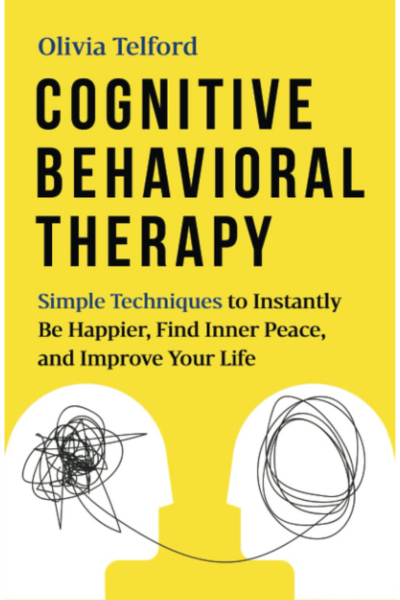
It’s safe, drug-free, and scientifically proven to work. Using powerful exercises you can do at any time and place, you can choose a brighter future.
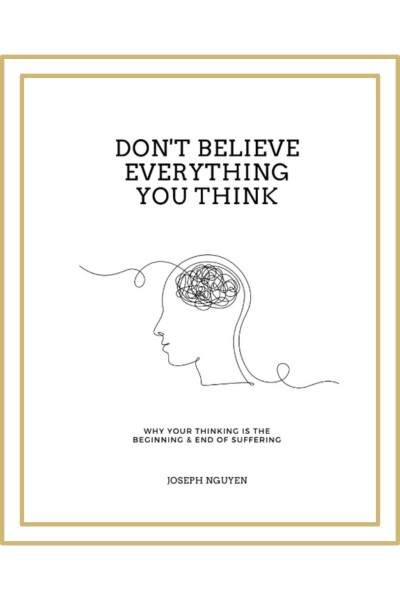
In this book, you'll discover the root cause of all psychological and emotional suffering and how to achieve freedom of mind to effortlessly create the life you've always wanted to live.

Conclusion
In conclusion, anhedonia is a multifaceted phenomenon that can significantly impact an individual's quality of life. Recognizing the signs, seeking professional help, and implementing coping strategies are essential steps toward managing anhedonia and moving toward a more fulfilling and emotionally balanced life. Remember that you are not alone, and with the right support, recovery is possible.
Relevant Reads>>>


